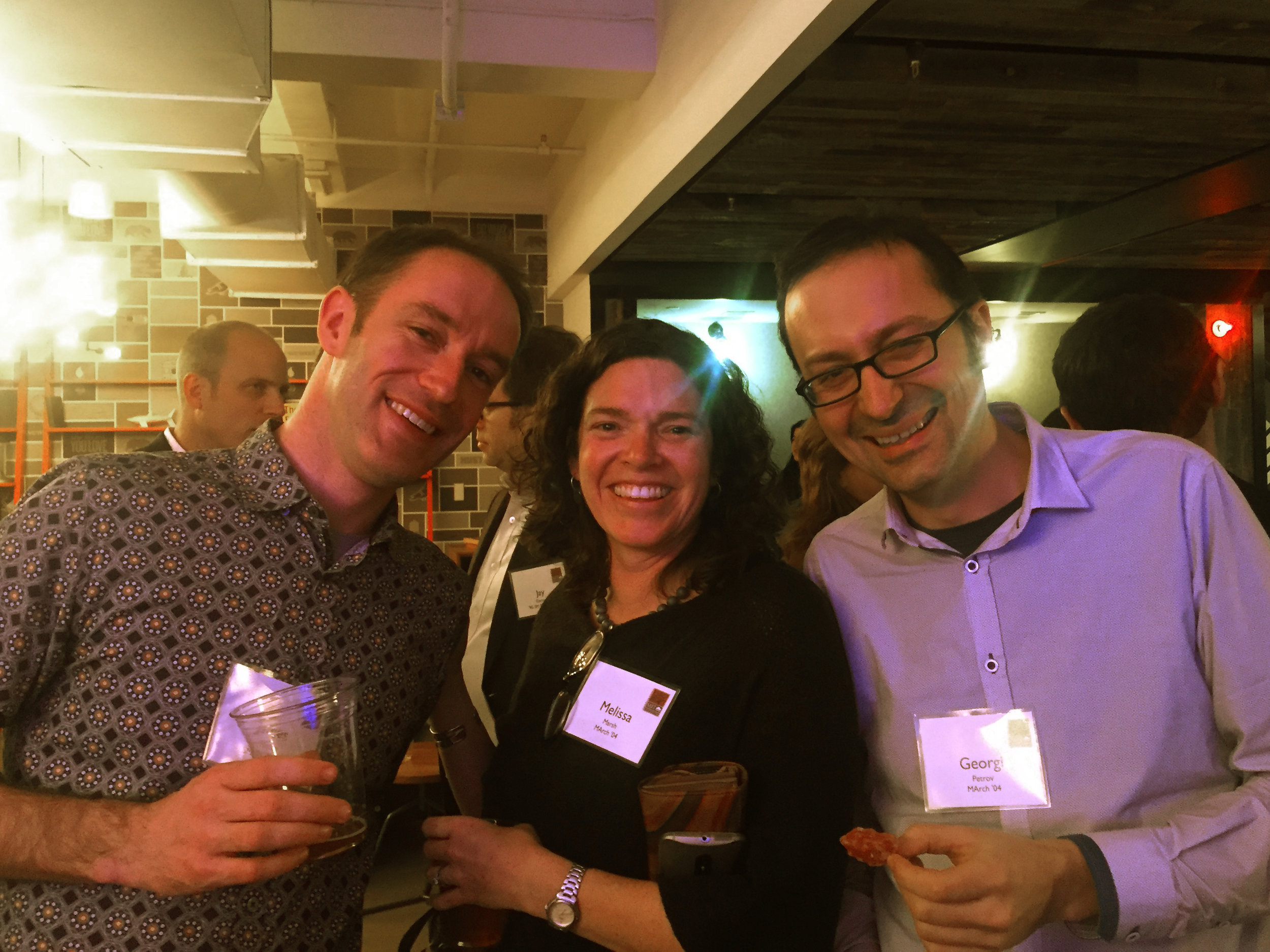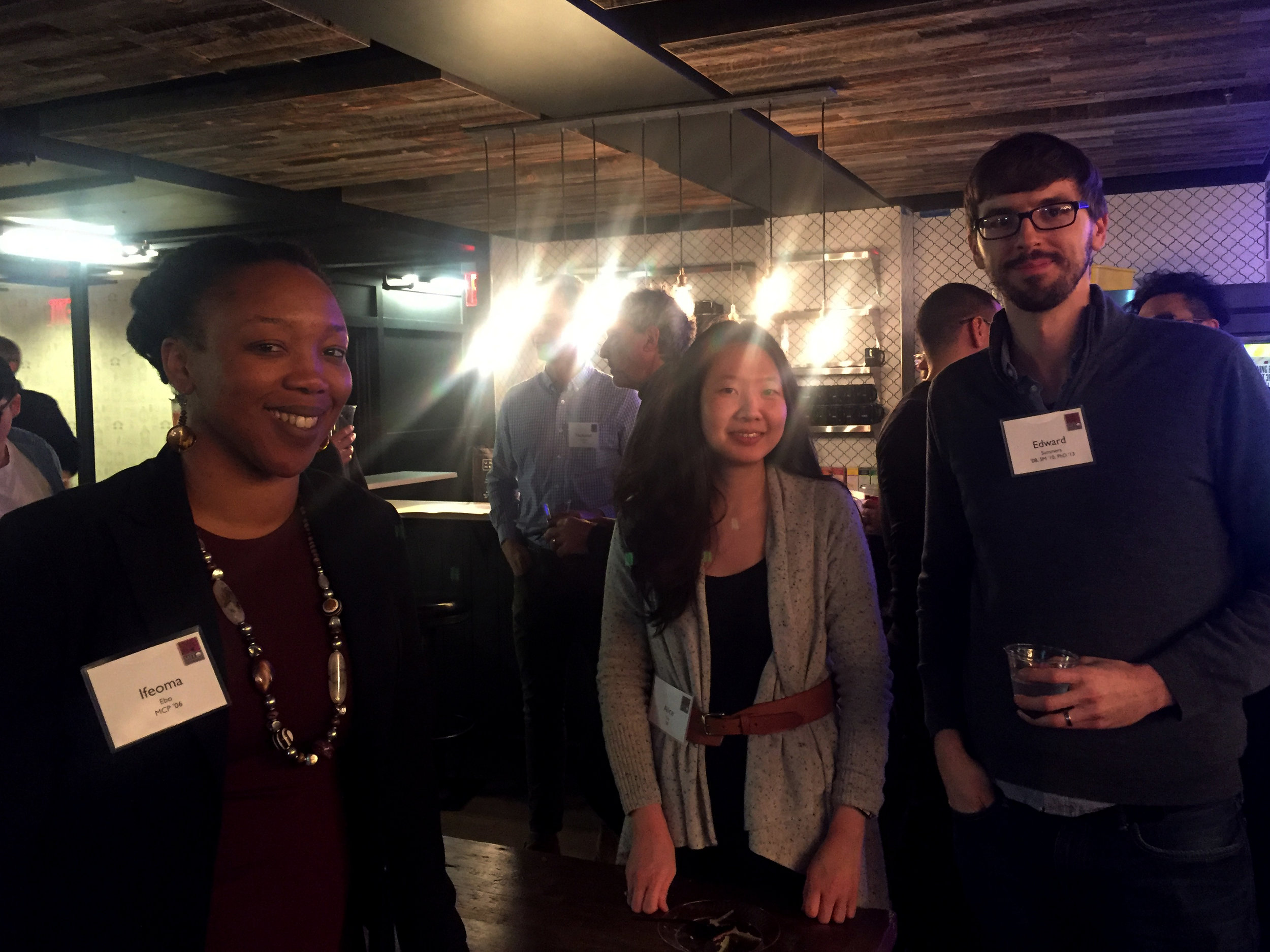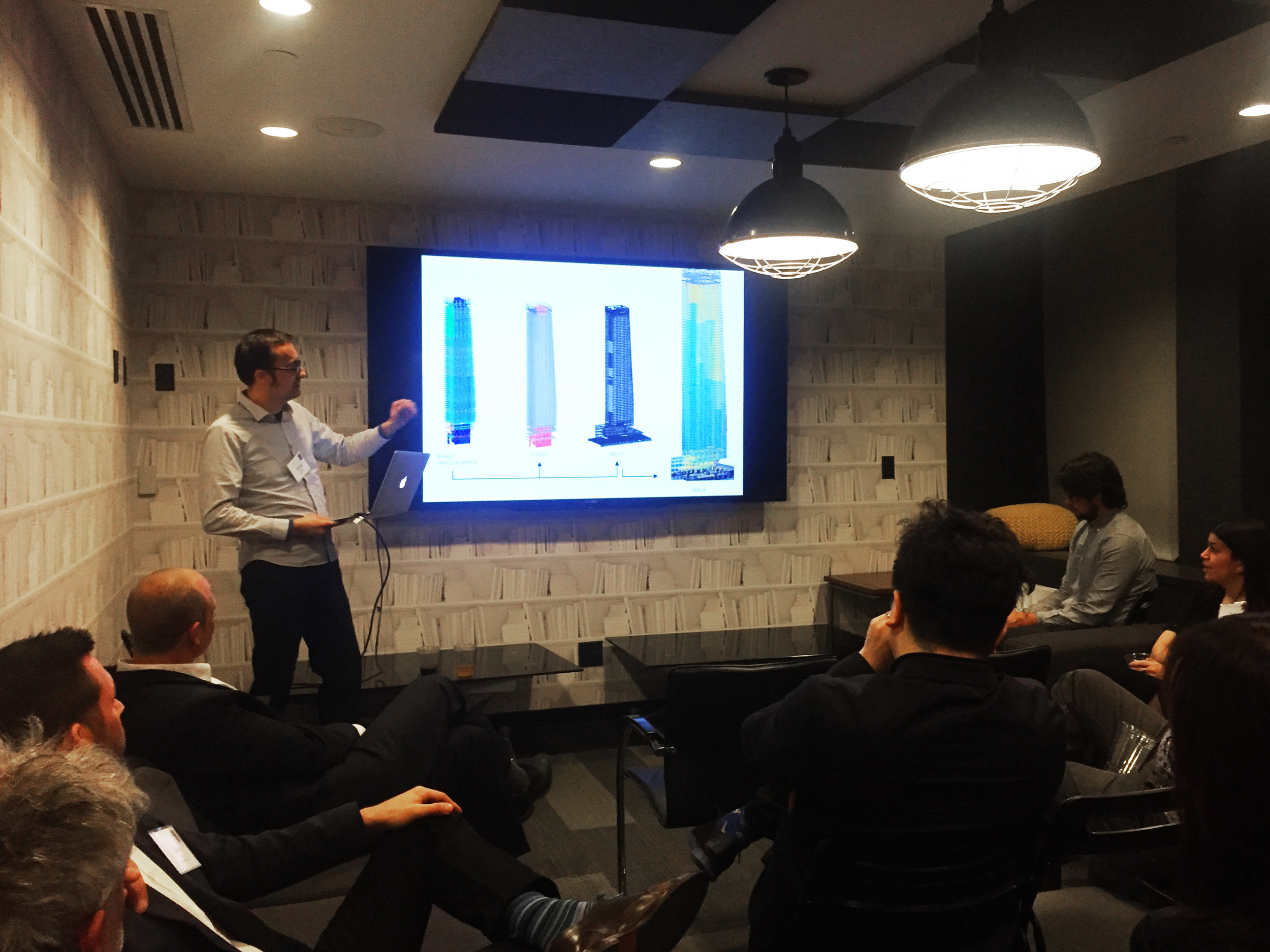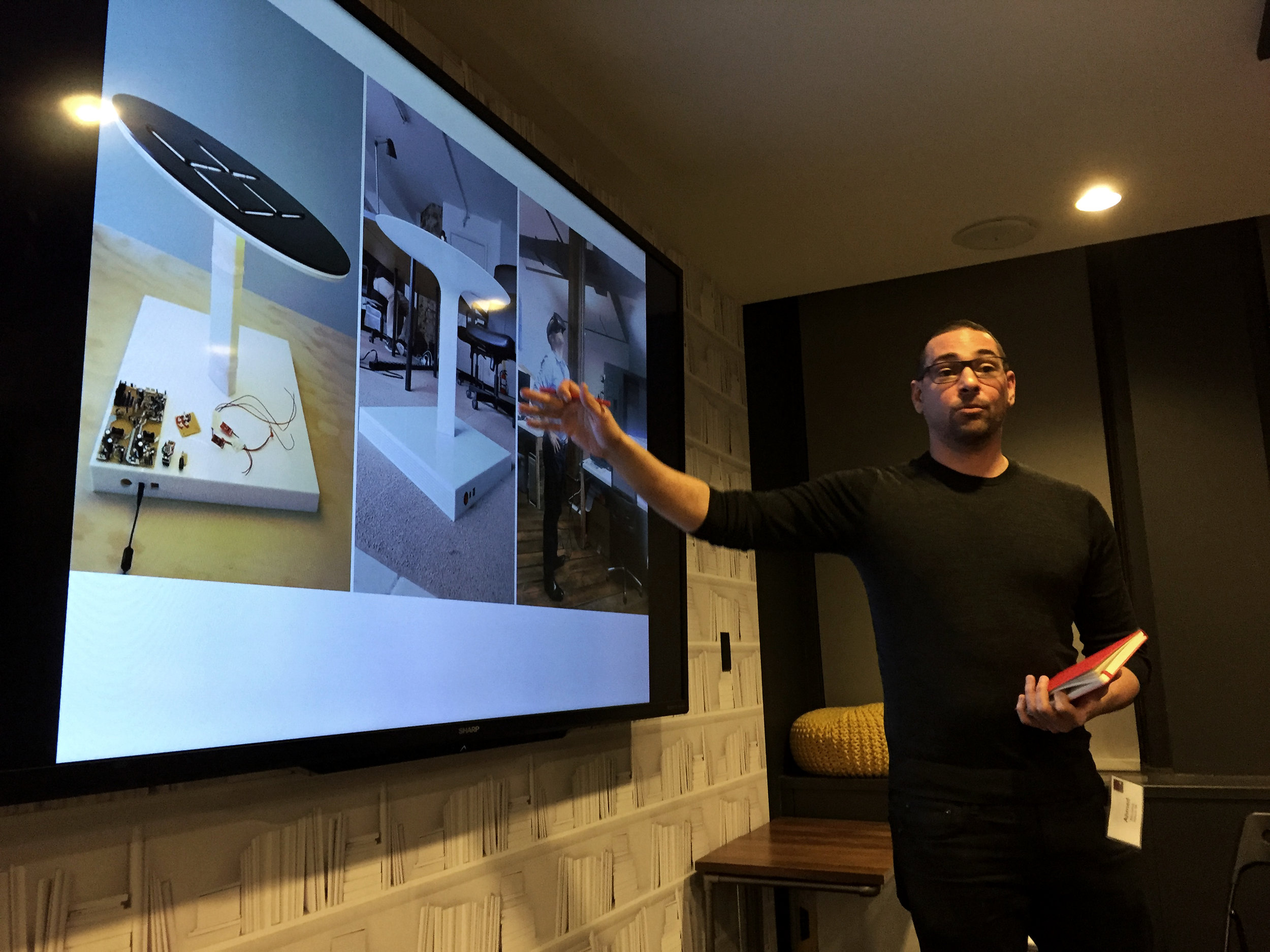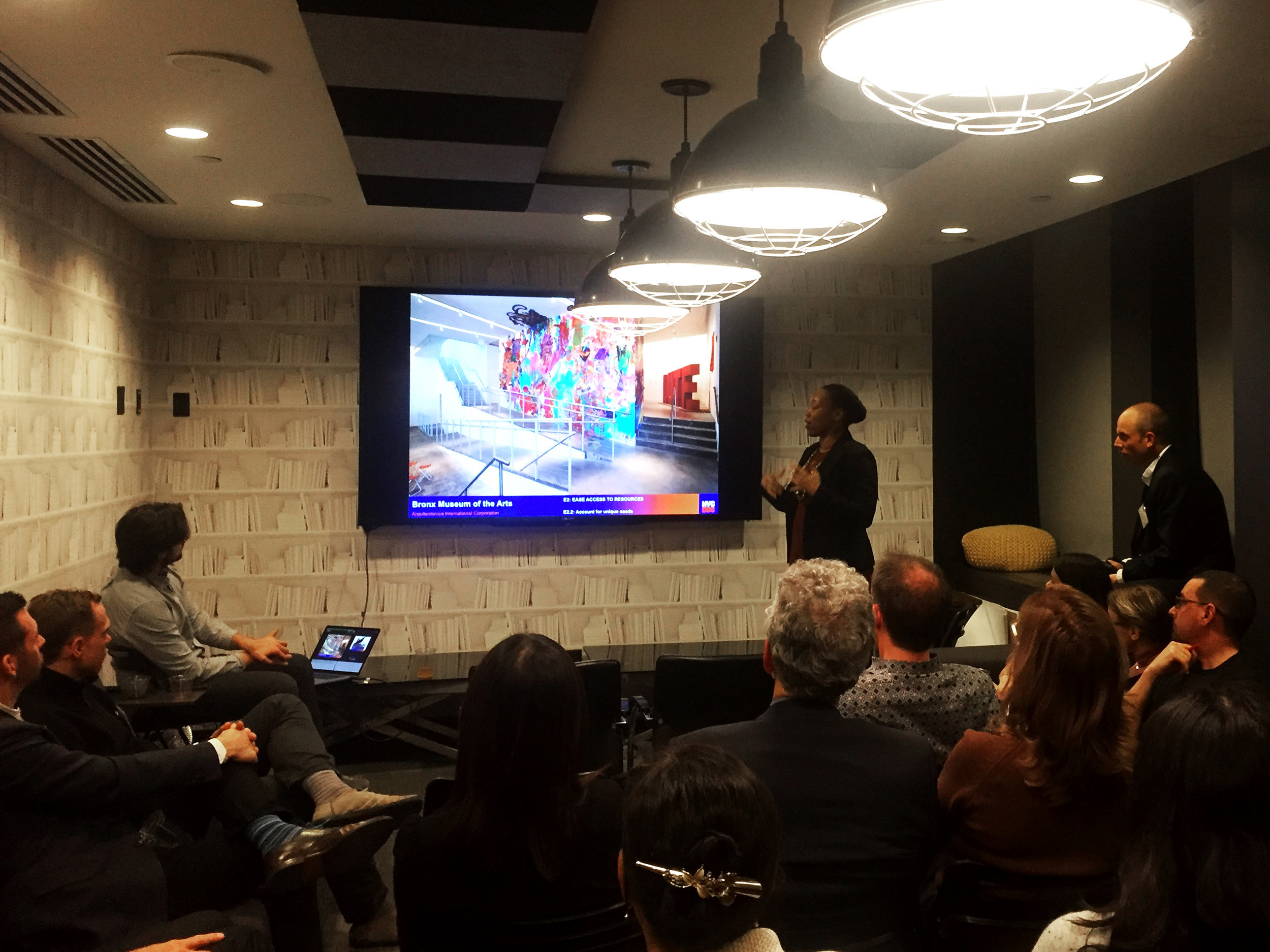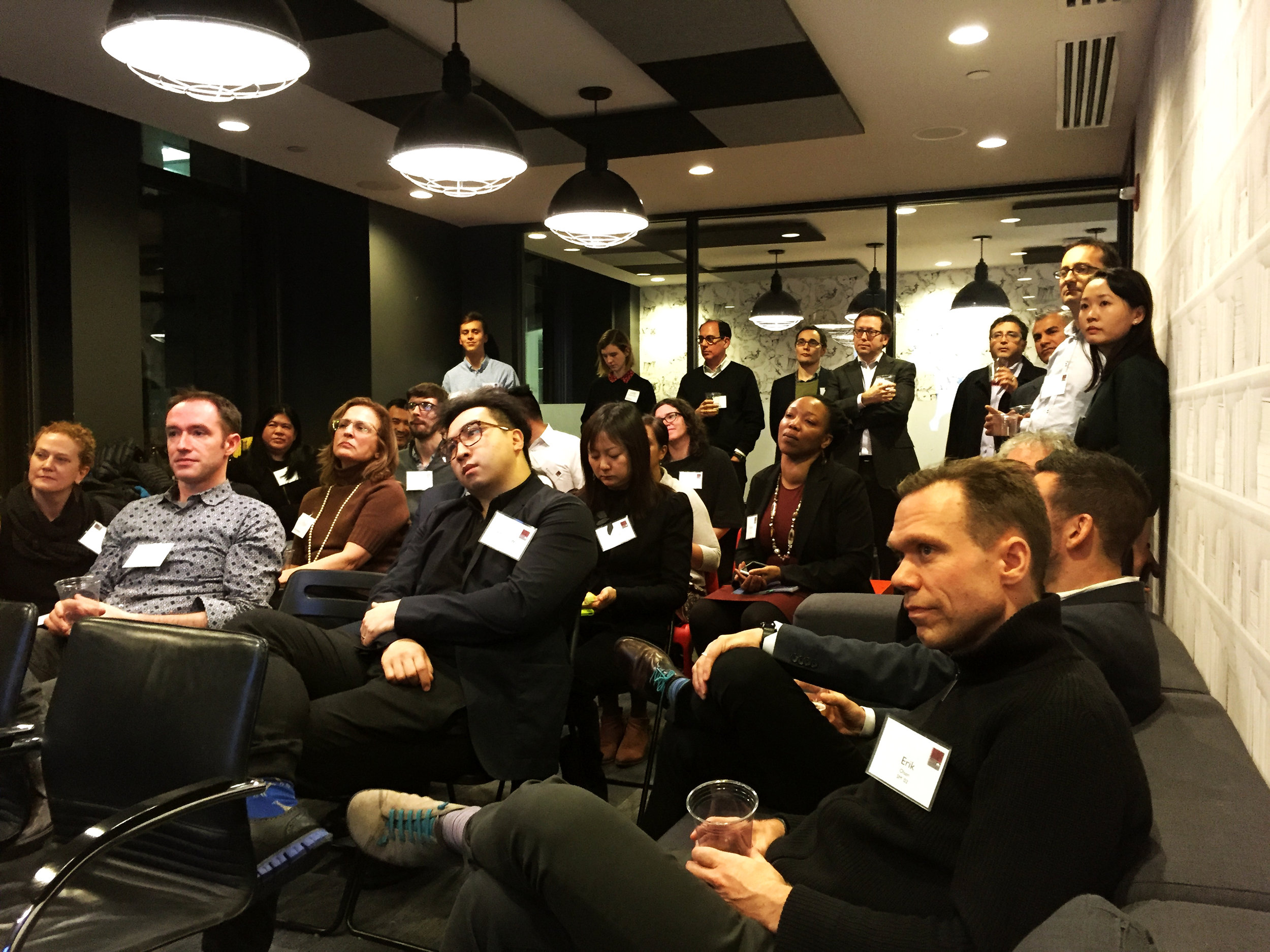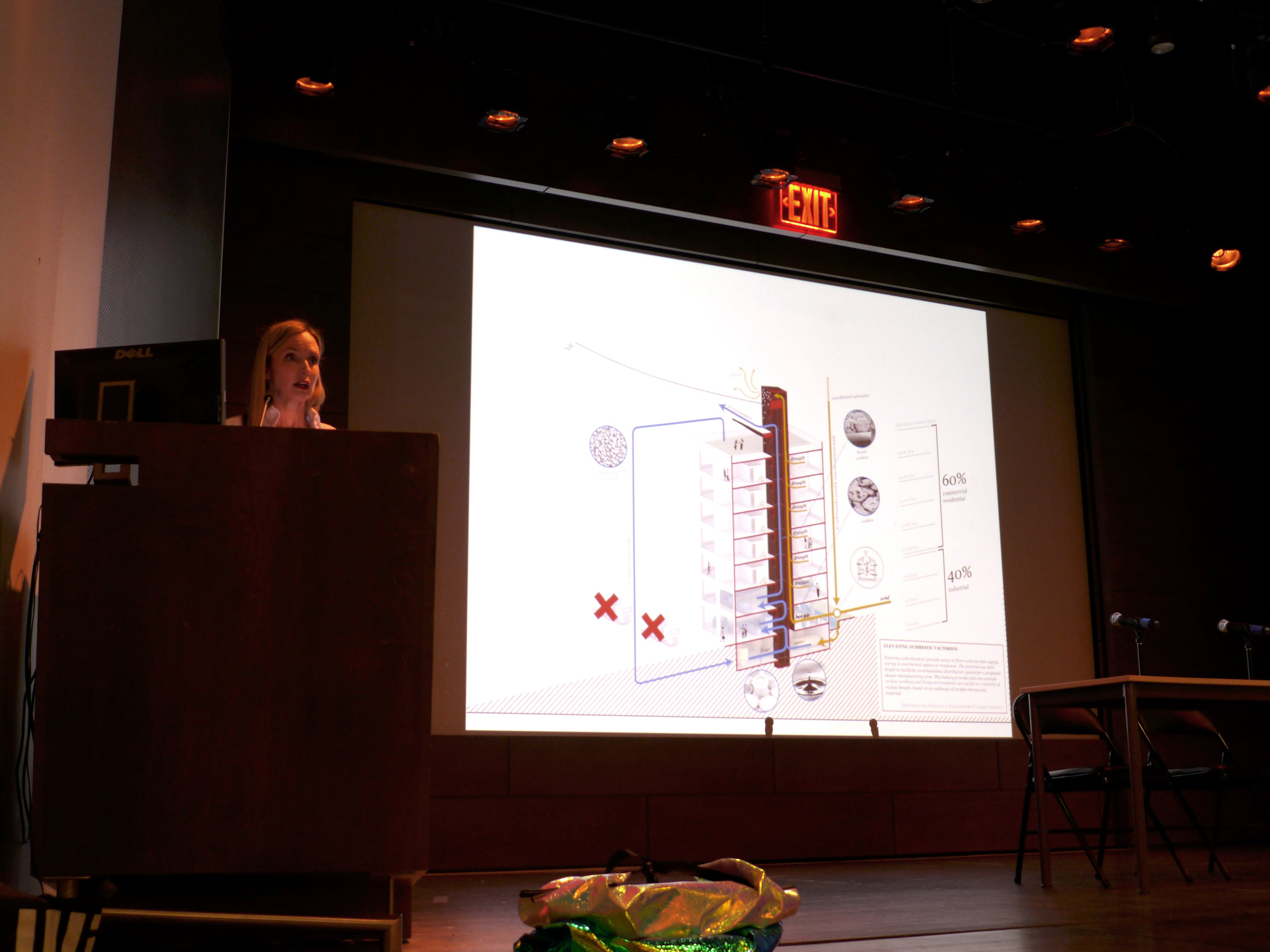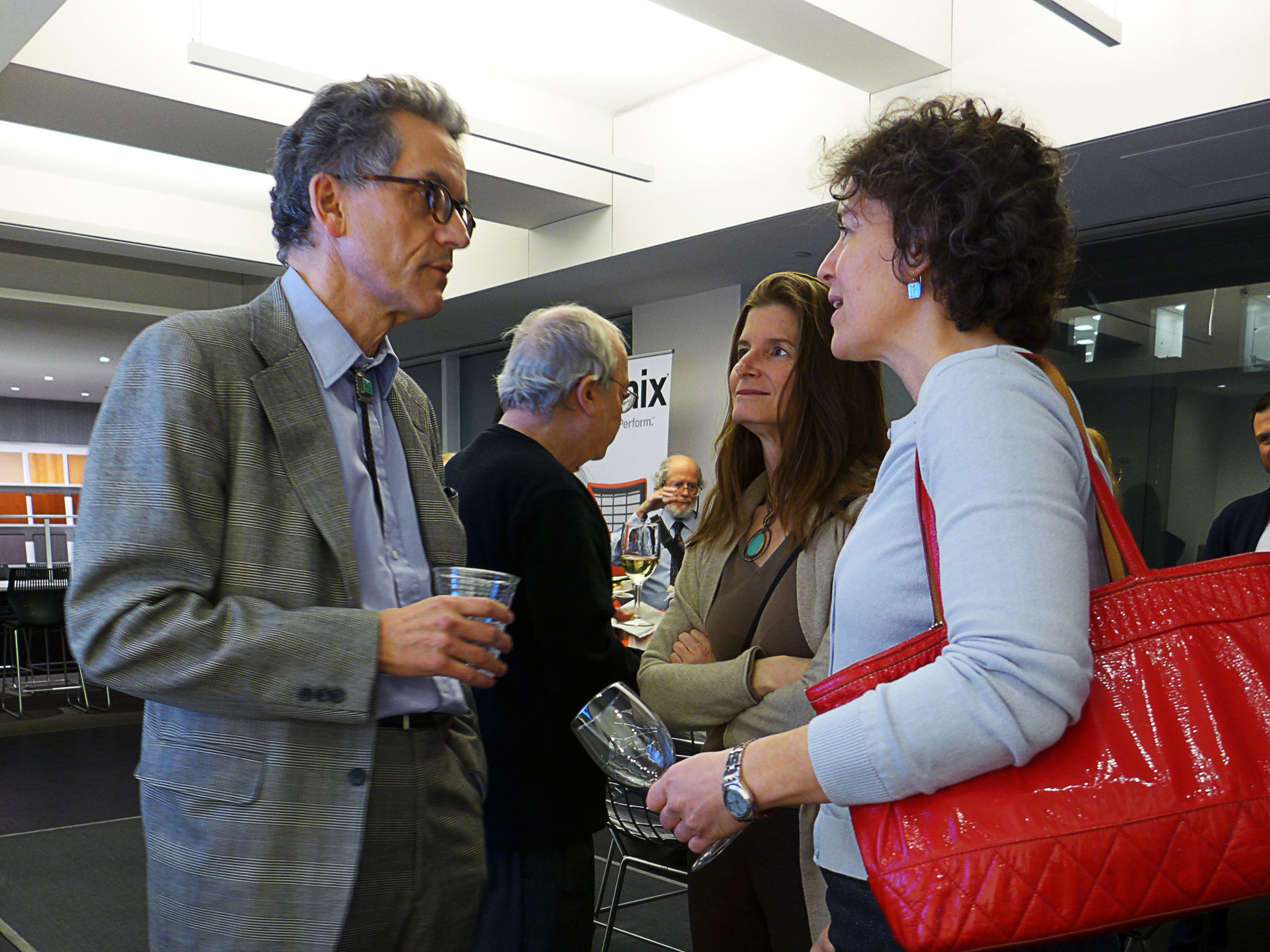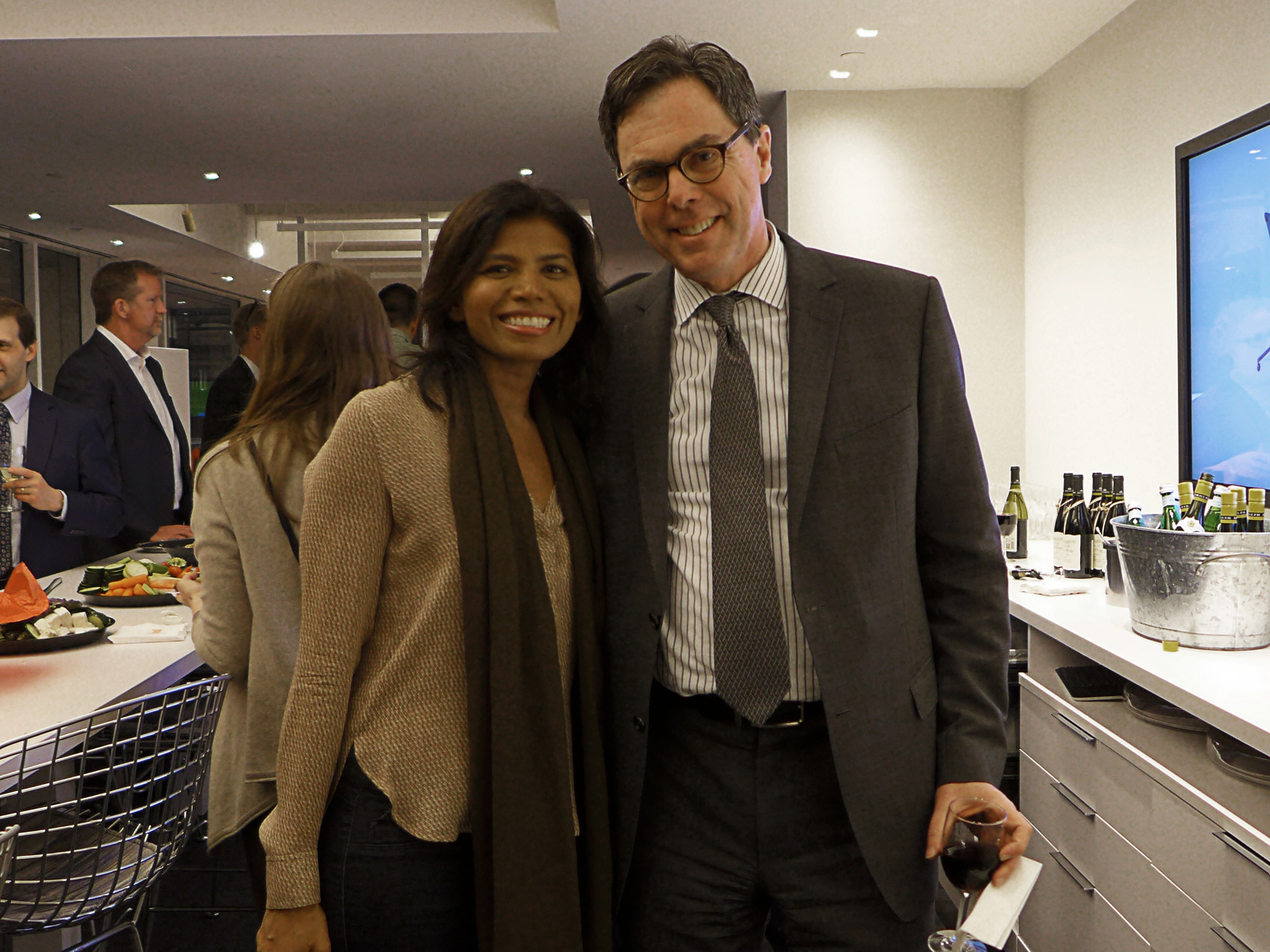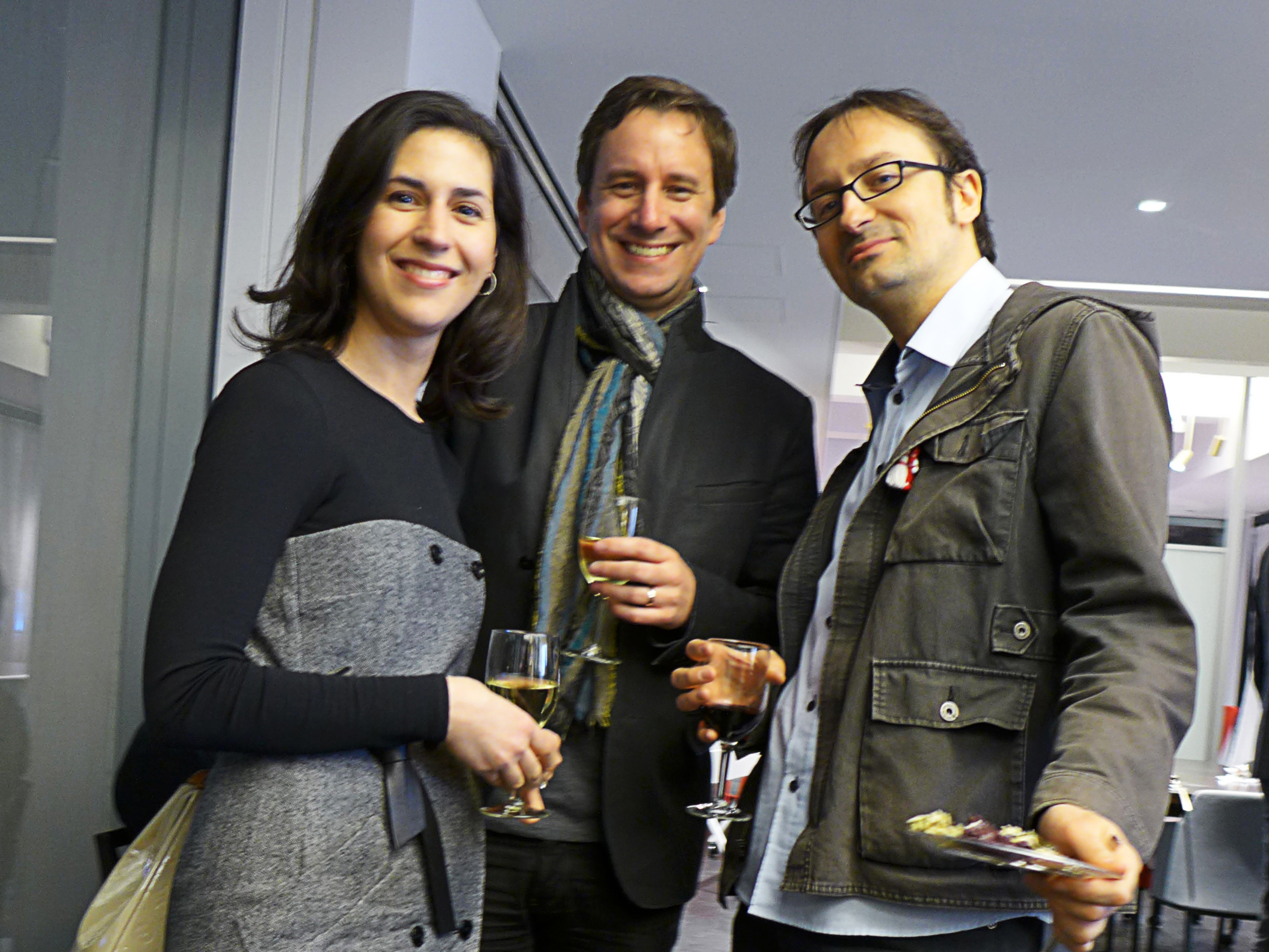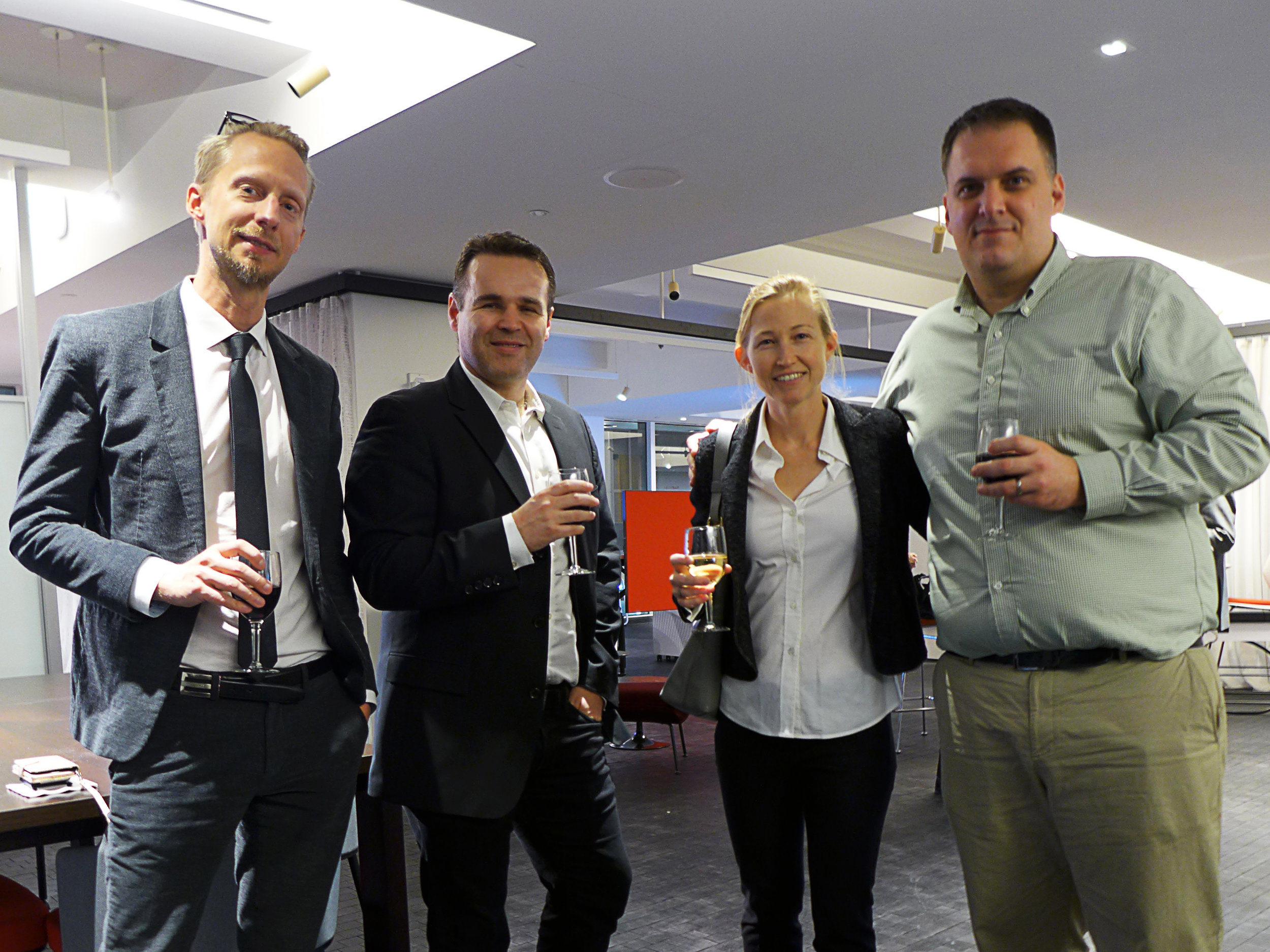On January 31st, 2017, the MIT Club of New York and the MIT Architecture Affinity Group (MITArchA) hosted a Course IV Alumni Social event in New York City. The event was held at WeWork Charging Bull, located in New York’s Financial District, and was hosted by Melissa Marsh, M.Arch ’04, MITArchA’s Vice President of Membership.
The event was set up as a combined social and presentation event. Alumni working in architecture or related disciplines were invited to give presentations on their personal or professional work.
Reflecting the fact that MIT architecture alumni work in many diverse fields, the presentations covered a wide range of topics, including: interaction design, urban planning, structural engineering, social justice, and architecture. The work presented also varied in type and scale, from responsive light installations to gravity-defying skyscrapers.
Ten alumni gave presentations: Jacob Kain, (President of MITArchA), Liz Burow, Elliot Felix, Erik Olsen, Li Lian Tan, Frank Hebbert, Ifeoma Ebo, Ahmed ElHusseiny, and James Patten.
The social event was implemented as part of an ongoing engagement initiative intended to expand MITArchA membership, foster an active architecture alumni community, and advance the missions of the MIT Club of New York and MITArchA.
Keep an eye out for news and events from other MIT student and alumni groups including DesignX, an SA+P-affiliated incubator that supports student, faculty, and alumni entrepreneurs as they start their ventures.
